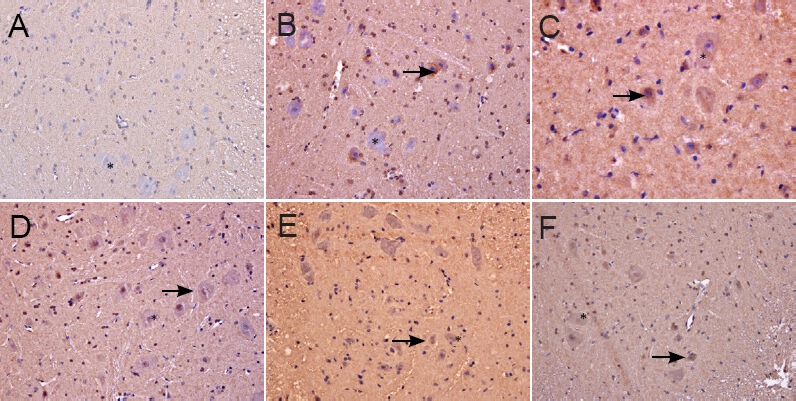Figure 7.

Caspase 3 immunoreactivity in the spinal cord of rats at 5 days after spinal cord ischemia/reperfusion injuny for the determination of the optimal dose of ginsenoside Rd (immunohistochemistry, × 400).
(A) Sham group; (B) ischemia/reperfusion injury group; (C–F) 6.25, 12.5, 25, 50 mg/kg ginsenoside Rd groups. (A) In the sham group, the neurons were large, the nuclei were round and lightly stained, the nucleolus was clearly visible, and no Caspase 3 posi-tive particles were found in the cytoplasm. (B) In the ischemia/reperfusion injury group, a large amount of Caspase 3 positive particles were found in the cytoplasm of some neurons. (C) In the 6.25 mg/kg ginsenoside Rd group, Caspase 3 positive particles were found in the cytoplasm of some neurons, but the number of particles and cells was significantly lower than that in the ischemia/reperfusion injury group. (D) In the 12.5 mg/kg ginsenoside Rd group, Caspase 3 positive particles were visible in a small number of neurons. (E, F) In the 25 and 50 mg/kg ginsenoside Rd groups, the neurons were large, a small amount of Caspase 3 positive particles were found in nerve cells. Arrows refer to apoptotic nerve cells.
